Results 10,921 to 10,930 of 12094
Thread: Anandtech News
-
12-30-20, 11:26 AM #10921
Anandtech: AnandTech Year In Review 2020: Solid State Drives
Solid state storage might not have been the most exciting tech sector to follow in 2020, but it certainly had its fair share of new technologies arriving, consumer-friendly price drops, and a major corporate acquisition deal. 3D NAND flash memory has reached 176 layers, PCIe 4.0 NVMe SSDs are gaining gaining ground, and QLC NAND has enabled the first 8TB M.2 SSDs.
More...
-
01-04-21, 08:39 AM #10922
Anandtech: Qualcomm Announces Snapdragon 480 - First 5G Low-end SoC
Today Qualcomm is making a big step towards enabling wide-spread adoption of 5G through the announcements of the new Snapdragon 480 low-end 5G SoC. The company had already alluded a few months ago that it would be releasing a Snapdragon 400-series design with 5G compatibility, bringing the new connectivity standard to the lowest-cost devices of the market, targeting the very high volume $250 price range.
More...
-
01-04-21, 08:39 AM #10923
Anandtech: Intel Core i9-10850K Review: The Real Intel Flagship
When a company like Intel creates a CPU design, the process of manufacturing brings about variation on the quality of the product. Some cores will only reach a certain frequency, while others have surprisingly good voltage characteristics. Two goals of processor design are minimizing this variance, but also shifting the peak higher, all while controlling how much of the silicon is actually useable. This is part of the magic of ‘binning’, the process of filtering the silicon into different ‘bins’ for applicability to a given product. It is through this process that the Core i9-10850K exists, albeit reluctantly.
More...
-
01-04-21, 11:39 AM #10924
Anandtech: Graphcore Series E Funding: $710m Total, $440m Cash-in-Hand
For those that aren’t following the AI industry, one of the key metrics to observe for a number of these AI semiconductor startups is the amount of funding they are able to generate. While funding is no explicit guarantee of success, it does indicate perhaps how much faith the venture capitalists (as well as OEMs and other silicon vendors) have in the technology. One of the most well-funded ventures in this space is Graphcore, and the company just announced its latest Series E funding round of $222 million, taking it to $710m total across the five rounds.
Graphcore, based in Bristol UK, is already on its second generation product, launching the Colossus MK2 GC200 in 2020. This chip contains 60 billion transistors, 900MB of built-in memory, is manufactured on TSMC’s N7 node at 823 mm2, and can achieve 250 TFLOPs of AI compute. Graphcore bundles four of them into a 1U chassis along with an Arm-based control chip and a crazy amount of networking to enable a network containing up to 64000 chips. Customers can order this IPU-M2000 unit, or 16 of them in a dedicated rack. Graphcore also provides the POPLAR software stack, with direct support for PyTorch, TensorFlow, ONNX, and PaddlePaddle machine learning frameworks.
The latest $222m Series E funding round was led by Ontario Teachers’ Pensions Plan Board (what?), with additional funds managed by Fidelity International and Schroders as new investors. Previous investors also participated, including Baillie Gifford and Draper Esprit. With the latest round of funding bringing the total up to $710m, this would put Graphcore at #2 in terms of AI Chip pure-play startups. This is just behind the $850m invested into Chinese semiconductor startup Horizon Robotics, founded by a CEO Yu Kai a Baidu veteran, of which the latest $150m round finished in December. SambaNova is #3 with $456m, and Nuvia has $293m. The latest round of funding brings Graphcore’s valuation to $2.77 billion.
With Graphcore’s first generation product, the company aligned with Dell to provide server units featuring eight add-in PCIe cards, each with two of its first generation IPUs. The company is claiming that the newest second generation MK2 is rolling out to more customers even during COVID times, especially to academic research such as UMass, Oxford, and ICL. Official details on its corporate customers seem somewhat thin, beyond an official tie-in with Microsoft, however Graphcore has said that they are currently working with hyperscalers and financial service companies.
This is perhaps why Graphcore also stating that it has $440m cash-in-hand is quite important. As every startup has an effective burn rate of capital, this should be sufficient for the company to also go out to enable more customers, as well as develop next generation products. Graphcore has already announced through TSMC that it is already scoping TSMC’s 3nm process for a future product line. Graphcore is also a member of the recently formed MLCommons, the governing body behind MLPerf, and expects to participate with its first submissions on MK2 in Q2 this year.
Source: Graphcore
Related Reading- TSMC and Graphcore Prepare for AI Acceleration on 3nm
- SambaNova Breaks Cover: $450M AI Startup with 8-Socket AI
- NUVIA Completes Series B Funding Round: $240M
- 342 Transistors for Every Person In the World: Cerebras 2nd Gen Wafer Scale Engine Teased
- NVIDIA Announces A100 80GB: Ampere Gets HBM2E Memory Upgrade
More...
-
01-04-21, 01:14 PM #10925
Anandtech: The ASRock Rack B550D4-4L, a B550 Motherboard with BMC
ASRock Rack, the professional arm of ASRock, has launched an interesting B550 model which is aimed at the server and workstation market, but uses the mid-range chipset. The ASRock Rack B550D4-4L benefits from support for AMD's latest Ryzen 5000 series of processors, with a BMC controller, support for up to 128 GB of non-ECC DDR4-3200 memory, and includes a single PCIe 3.0 M.2 slot from the chipset.
The main feature on the ASRock Rack B550D-4L, which other B550 models do not have, is the inclusion of an ASPEED AST2500 BMC controller, which adds IPMI configuration access across a network. A Realtek RTL8211E provides connectivity for the IPMI management, and it also includes four more Intel i210 Gigabit Ethernet controllers with RJ45 ports on the rear. Also present on the rear panel is a pair of USB 3.2 G2 Type-A and two USB 3.2 G1 Type-A ports, with a single HDMI output for integrated graphics, a D-sub output for the BMC controller, and a DB9 serial port.
Designed for use in a server and workstation environment, the ASRock Rack B550D4-4L uses a transposed AM4 PGA1331 socket with four memory slots located horizontally along the top. The memory slots allow for up to 128 GB of ECC and non-ECC UDIMM DDR4-3200 memory, while for storage, the board includes a single PCIe 3.0 x4 M.2 slot with support for SATA drives too. For conventional storage drives, ASRock Rack also includes four SATA ports powered by the B550 chipset, which supports RAID 0, 1, and 10 arrays, while an ASMedia ASM1061 chip controls another two ports.
The board uses a simplistic design, with a green PCB, which is typical of server-grade and workstation models. Towards the center of the B550D4-4L is a full-length PCIe 4.0 x16 slot, with a half-length PCIe slot that runs in Gen4 x4 mode with a Ryzen 5000 processor installed. This board technically supports Ryzen 5000 (Gen 4), Ryzen 4000G APUs (Gen 3), and Ryzen 3000 CPUs (Gen 3), along with all Pro counterparts, but ASRock doesn't go into detail about how the PCIe is split with the other processors.
Located around the PCB is plenty of connectivity with a BMC_SMB header, a TPM header, a PMBus connector, as well as six 6-pin fan headers. It uses a conventional 24-pin 12 V ATX power input for power to the motherboard, with a single 8-pin 12 V EPS connector for the CPU. There is also a two-digit debug display for monitoring POST codes.
Although the ASRock B550D-4L will fit conventional chassis with its ATX size, it's primarily designed for 1U chassis and professional use cases such as server and workstation systems. ASRock hasn't unveiled any information about when it can be expected to launch at retail.
Gallery: The ASRock Rack B550D4-4L, Server Board For Ryzen 5000_thumb.jpg)
_thumb.jpg)
_thumb.jpg)
_thumb.jpg)
Related Reading- Testing The World's Best APUs: Desktop AMD Ryzen 4750G,4650G, and 4350G
- AMD Zen 3 Ryzen Deep Dive Review: 5950X, 5900X, 5800X and 5600X Tested
- The GIGABYTE B550I Aorus Pro AX Motherboard Review: All The Small Things
- Best AMD Motherboards: December 2020
- ASRock First For B450 Ryzen 5000 Support: Beta BIOSes Now Available
More...
-
01-05-21, 05:04 AM #10926
Anandtech: Cost Increases and Tariffs: ASUS to Increase MSRP on Graphics Cards and Mo
It is fairly easy to state that 2020 has had a deep effect on the supply chain mechanics of creating electronics and electronic components. Not only have there been logistical challenges in meeting regular levels of production, but the increase in demand due to work-from-home measures is putting additional strain up and down the ecosystem. On top of this, continued volatility with regards to trade and tariffs have been leaving more questions unanswered as to how companies involved in the results of all of this should engineer their operations.
To that end, ASUS has put out a statement through its public Facebook group stating that it will be increasing MSRP on components, with graphics cards and motherboards being highlighted as the initial targets, with more to potentially follow. The reasons for this are described in the post, made by long-time ASUS employee Juan Jose Guerrero III, are due to ‘increases in cost for components, operating costs, and logistical activities plus a continuation of import tariffs’. Guerrero goes on to say that ASUS ‘worked closely with our supply logistic partners to minimise price increases’.
The exact scale of the price increases will be borne through the next few weeks, as the price adjustments work their way through the supply chain to distributors and finally retailers. ASUS is a large scale production house for both AIB graphics cards and motherboards, and can often deal with economies of scale, so the fact that the company has chosen to be open about its MSRP increases should indicate that other similar businesses might have changes coming soon, if not already applied, given that the issue of component costs, logistics, and import tariffs are industry wide and not just limited to one company. ASUS highlights that these are two initial product lines, and ‘additional models may see an increase as we move further into Q1’.
Should an exact price differential list be made public, we will share it.
Source: ASUS PC DIY Group (Facebook)
Related Reading- ASUS PN50 Mini-PC, with Ryzen Mobile 4000 APUs, Coming September
- ASUS Announces ROG Phone III - 144Hz S865+ Monster
- The ASUS ROG Strix B550-F Gaming Wi-Fi Motherboard Review: Premium Value
- ASUS ROG Maximus XII Hero Wi-Fi Review: The Tale of Two Motherboards
- ASUS Launches An Old GPU: The NVIDIA GT 710 with Four 4K HDMI Ports
- ASUS Launches ROG Strix XG27WQ Curved 165Hz Monitor: FreeSync Premium Pro Certified
More...
-
01-05-21, 08:41 AM #10927
Anandtech: Zotac ZBOX CI662 nano Fanless mini-PC Review: Second Stab at Silencing Suc
Zotac is one of the major players in the SFF PC space, having marketed ultra-compact form-factor machines even before the NUCs took off. The growth in that segment has broadened the available market for their mini-PCs, allowing them to experiment with a wide variety of models for different use-cases.
The passively-cooled SFF systems from Zotac are marketed under the 'C-series' tag. These 'nano' units used to adopt a NUC form-factor (100mm x 100mm) with similar chassis dimensions, which provided performance and thermal efficiency commensurate with their size. Starting with the Kaby Lake-Refresh series, the company started adopting a larger form factor and added some platform features. We had reviewed the Zotac ZBOX CI660 nano in that generation in early 2019.
Today, we are taking a look at the Comet Lake-U-based follow-up - the Zotac ZBOX CI662 nano.
More...
-
01-05-21, 10:24 AM #10928
Anandtech: Qualcomm Appoints Cristiano Amon to CEO, Effective June 30th 2021
Throughout the industry wide push towards 5G, Qualcomm has been at the forefront of making the most noise about 5G technology. The company has developed patents and technologies that cover both infrastructure and end-points, and the face of that business in recent years has been Cristano Amon. In his position as President, Cristiano has championed the use of the latest generation of wireless connectivity technologies, and has been a key architect of how the company has driven the deployment of 5G involving Qualcomm solutions. Today it has been announced that Cristiano Amon has been voted by the Qualcomm Board of Directors to succeed current CEO Stephen Mollenkopf, 52, upon his retirement later this year. Mollenkopf has been with Qualcomm for 26 years, taking the job as CEO in 2014.
Qualcomm’s business falls into three distinct categories: wireless products, patent licensing, and strategic investment. As president, Cristiano has headed the wireless product and semiconductor division through the development, deployment, and execution of Qualcomm’s worldwide 5G infrastructure initiatives as well as modems, processors, and new markets such as automotive, IoT, and the RF front-end. In his new role, the other divisions will come into his purview. Amon, 50, joined Qualcomm in 1995 as an engineer and has worked up through the semiconductor side company, steering development of Qualcomm’s productization as well as its M&A, and Amon has served as President since January 2018.
“I am honored to be named the next CEO of Qualcomm and appreciate the confidence that Steve and the Board have in me," said Amon. “Qualcomm is an incredible Company. We have been at the forefront of innovation for decades and I look forward to maintaining this position going forward. In addition to driving the expansion of 5G into mainstream devices and beyond mobile, Qualcomm is set to play a key role in the digital transformation of numerous industries as our technologies become essential to connecting everything to the cloud. The need for our solutions has never been more pronounced and our leadership position has never been more evident. I look forward to working with our 41,000 employees around the world to create technologies that revolutionize the way people live, work and connect with each other.”2021 comes at a key time for Qualcomm, especially as 5G is gaining traction in key markets and the differential deployment of the two major 5G technologies (sub 6 GHz and mmWave) has become a technological sticking point for both infrastructure and product design. The current global climate has made this difficult, but Qualcomm is pushing ahead with wireless providers to assist in seamless transitions, with roadmaps for each region of the world scaling out over several years. The company recently surged ahead announcing a high-end smartphone processor (Snapdragon 888) as well as the first entry-level 5G SoC (Snapdragon 480) this week, both of which will be in a number of handsets by the end of year covering device price ranges from $200 to over $1000.
Over the past few years during Mollenkopf’s tenure, alongside +170% stock value growth, Qualcomm has weathered a number of legal disputes, such as with Europe, Apple and the FTC, regarding its business models. In 2018, Qualcomm was the target of a takeover by Broadcom, which would have valued the combined company at $117 billion, but was both rejected by Qualcomm and blocked by US regulators due to national security concerns. Amon takes the role with targets that include shipping 500 million mobile SoCs with 5G in 2021.
At this time Qualcomm has not stated if Amon’s direct position will be filled, or by whom, although the company has several months to make that decision. Here at AnandTech we have interviewed Cristiano on a couple of occasions [1,2], as well as SVP/GM of Mobile Technologies, Alex Katouzian [3], who leads the Mobile division. With backgrounds in engineering, through our discussions with both Cristano and Alex, it is clear how much the underlying technology behind the products has been a key driver of what makes them excited about the direction the company is taking. We hope to get an opportunity to quiz Cristiano later in the year about his intended direction for Qualcomm as he takes the helm.
Source: Qualcomm
Related Reading- Talking Snapdragon: An Interview with Cristano Amon, President of Qualcomm
- Fireside Interview on 5G with Cristano Amon and Alex Katouzian, Qualcomm
- Qualcomm Tech Summit 2020: Interview with Alex Katouzian
- Qualcomm Details The Snapdragon 888: 3rd Gen 5G & Cortex-X1 on 5nm
- Qualcomm Discloses Snapdragon 888 Benchmarks: Promising Performance
- Qualcomm Announces Snapdragon 480 - First 5G Low-end SoC
More...
-
01-05-21, 10:24 AM #10929
Anandtech: Intel Begins End-of-Life Plan For Coffee Lake 300-Series Chipsets
Intel has begun plans to discontinue its 300-series chipsets, including the higher-end Z390, Z370 chipsets, as well as its longer life B and H series chipsets. The 300-series chipsets are based on the second revision of Intel's LGA1151 socket designed for its Coffee Lake processors.
In 2017, to complement the launch of its 8th generation Core i7, i5, i3, Pentium, and Celeron Coffee Lake processors, Intel unveiled its 300-series chipsets. This includes the Z390, Z370, B365, and H310 chipset. The most notable processors for the 300-series are the Core i7-8700K and Core i5-8600K, which remained as its flagship desktop processors throughout the end of 2017 and well into 2018. Intel even released its Core i7-8086K processor, a limited edition chip, and had high-binned silicon for high overclocking potential. The 300-series was then replaced with the 400-series, with a focus on Intel's 9th Generation Core processors, but supported 9th Gen and 8th Gen.
Outlining its discontinuance plan until the last shipping date expected on or before January 28th 2022, Intel advises its customers to make its final orders by July 23rd 2021.
Perhaps one of the most critical elements of the end of life plan is the H310 chipset. This is a chipset designed for longevity with three variations, including H310 and H310D based on 14 nm and the H310C built on 22 nm. It could be that the H310 chipset wasn't as popular as expected, especially compared to the H81 chipset, which lasted over 7 years before it was discontinued.
The Intel 300-series chipset has since been replaced by the 400-series desktop chipset, including Z490, W480, H470, B460, and Q470. These chipsets offer better support for its Coffee Lake processors. There have also been many rumors circulating that Intel's latest 500-series chipsets will be announced during CES, with Intel finally switching to PCIe 4.0 with its new 10 nm Rocket Lake processors are expected towards the end of Q1.
Related Reading- Intel Z390 Motherboard Overview: 50+ Motherboards Analyzed
- Intel's 11th Gen Core Rocket Lake Detailed: Ice Lake Core with Xe Graphics
- Intel Confirms Rocket Lake on Desktop for Q1 2021, with PCIe 4.0
- Intel Preps New H310 Chipset Revision With Windows 7 Support For Coffee Lake
More...
-
01-05-21, 09:13 PM #10930
Anandtech: Jim Keller Becomes CTO at Tenstorrent: "The Most Promising Architecture Ou
It is high praise when someone like Jim Keller says that your company ‘has made impressive progress, and has the most promising architecture out there’. That praise means twice as much if Keller actually joins the company. Today Tenstorrent is announcing that Jim Keller, compute architect extraordinaire, has joined the company as its Chief Technology Officer, President, and joins the company board.
More...
Thread Information
Users Browsing this Thread
There are currently 24 users browsing this thread. (0 members and 24 guests)





 Quote
Quote
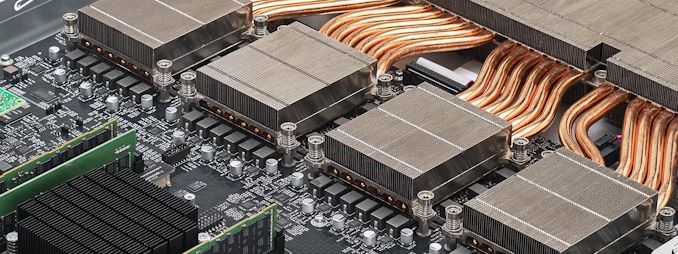
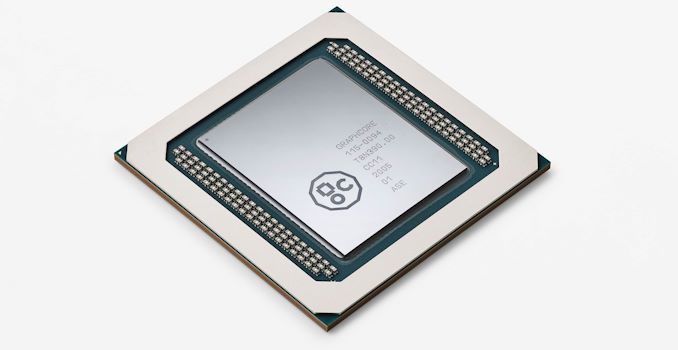
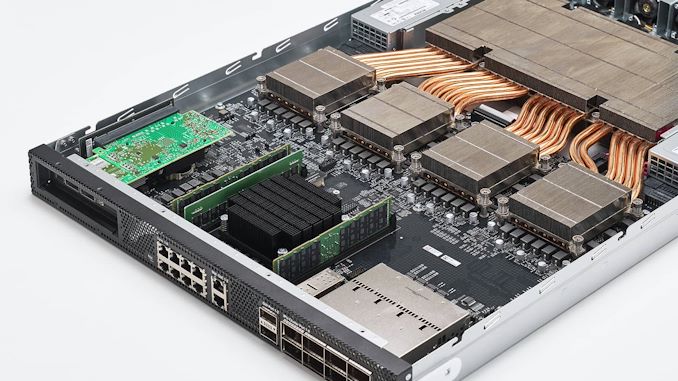
_575px.jpg)
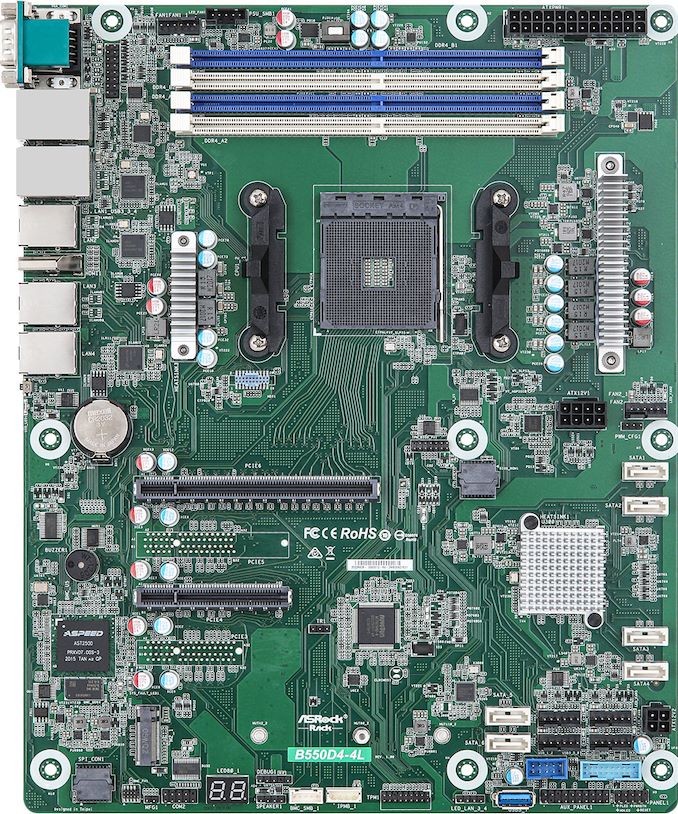

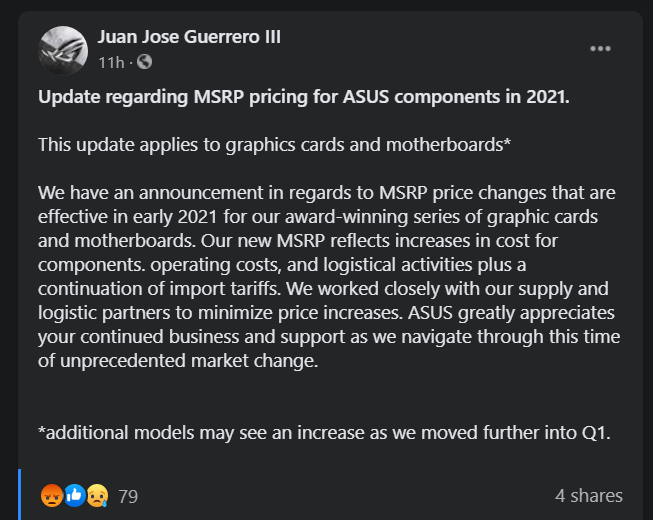



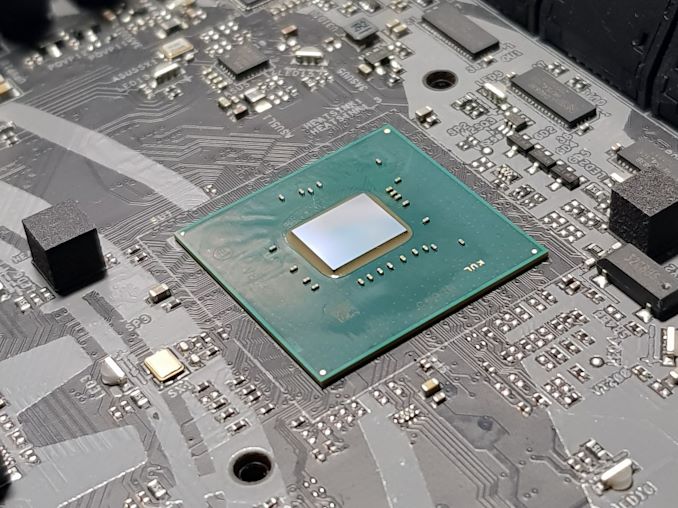
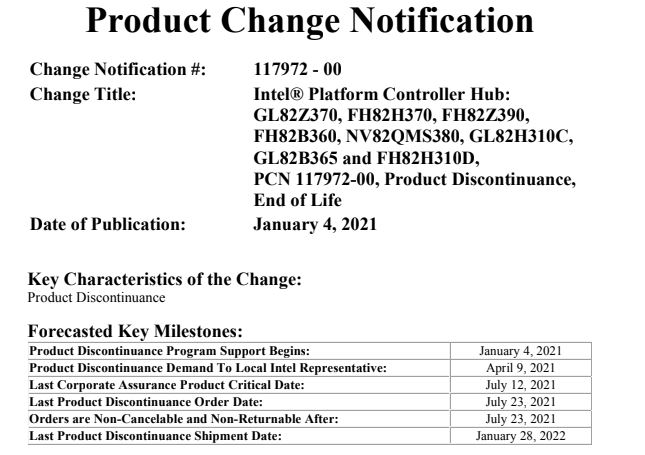
















Bookmarks